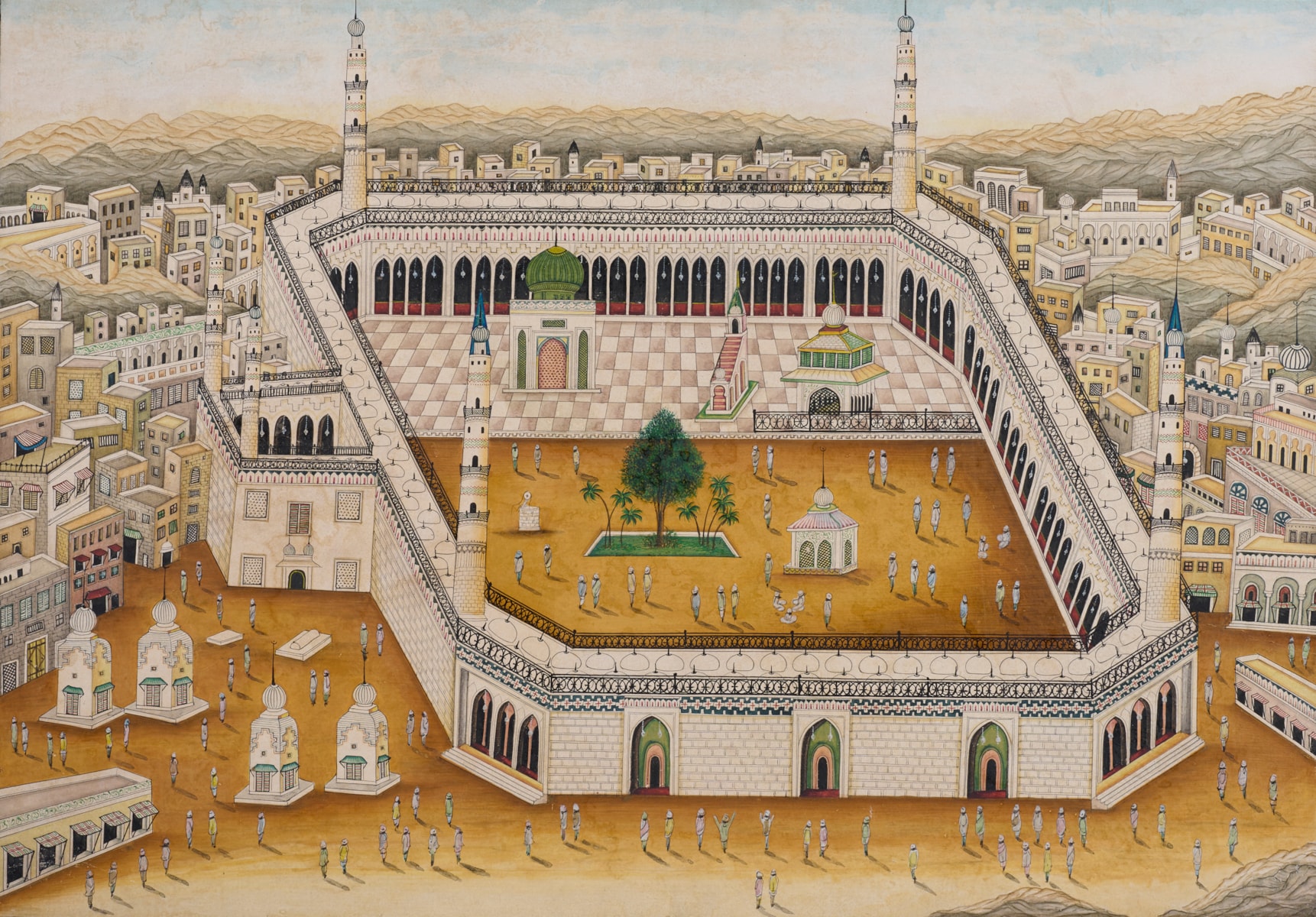
Indian School, late 19th Century
The Prophet’s Mosque, Al-Masjid an-Nabawi, Medina
Description:
gouache heightened with gold, ruled in black and blue, with a thin green border
440 by 610 mm
Note:
This finely painted gouache on paper depicts the Prophet’s Mosque, Al-Masjid an-Nabawi, in Medina, Saudi Arabia. Shown from an imaginary elevated viewpoint, the mosque is bordered on three sides by domestic houses and backed by mountains to the rear. Turbaned pilgrims in white robes are seen in the foreground. The Prophet’s Mosque was constructed in 623 AD under the leadership of the prophet Muhammad, and after the Masjid al-Haram in Mecca, it is the second largest mosque and holy site in Islam. It is therefore a major site of pilgrimage for those who perform the Hajj. Although it is now largely covered, the mosque was originally designed as an open-air building and served as a community centre, court of law, and religious school. As depicted here, the upper half of the open courtyard contains a minbar, a short flight of steps used as a platform for preachers, and a Green Dome, the site of the tomb of Muhammad, one of the traditional stops on the pilgrimage to Mecca.
As reported by Richard Burton on his voyage to Saudi Arabia in 1853, a number of Indian artists supported themselves by ‘drawing pictures of the holy shrines in pen and ink’ in the holy cities of Mecca and Medina. This gouache was likely produced by one such artist and is a typical example of the works produced by the artists working in the Pahari tradition during the 19th century. The sensitivity of the landscape, refined use of line and delicate application of colour are evocative of the paintings of the Guler School, one of the major schools of Pahari painting, which are similar in form to the Mughal miniatures of the 17th century.
